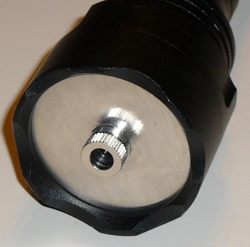- Joined
- Aug 25, 2007
- Messages
- 2,007
- Points
- 63
thats pretty cool seeing these number for me, because it shows where the LD starts to get more and more efficient. In this case the mw surpasses the ma somewhere between 120-140.
That's not the correct way of thinking about efficiency for laser diodes. The differential, or "slope", efficiency of a laser diode is proportional to the slope of the current vs. power output curve. The differential/slope efficiency is the overall efficiency of the diode. The slope of his chart is basically invariant across the whole range given (R^2 >.999 for a linear fit, so it's a very good line, and doesn't curve visibly), so the efficiency isn't changing. Plot the data, and you can see why there's a point where the mA is equal to the mW with these particular diodes: the slope is greater than 1, but the line is offset because you have to reach a certain current before lasing begins, ie threshold. You can move the "mA = mW" point by changing the efficiency (ie the slope) or changing the threshold current, and either one would change that "mA = mW" point. So, think of efficiency as the slope of the region, and threshold as another important factor in diode operation.
With laser diodes, if anything, the chart gets "less steep" as you increase current, as they get less efficient as you increase current. This is especially evident with CW operation due to heat: if these lasers could survive the optical output, the slope would keep decreasing, and could actually roll over and the slope would become negative, but the diodes die from the optical powers before that happens. With these diodes, you really can't see any change in slope on the ranges given, the optical flux seems to kill them before other effects (eg heat) make the efficiency drop.






